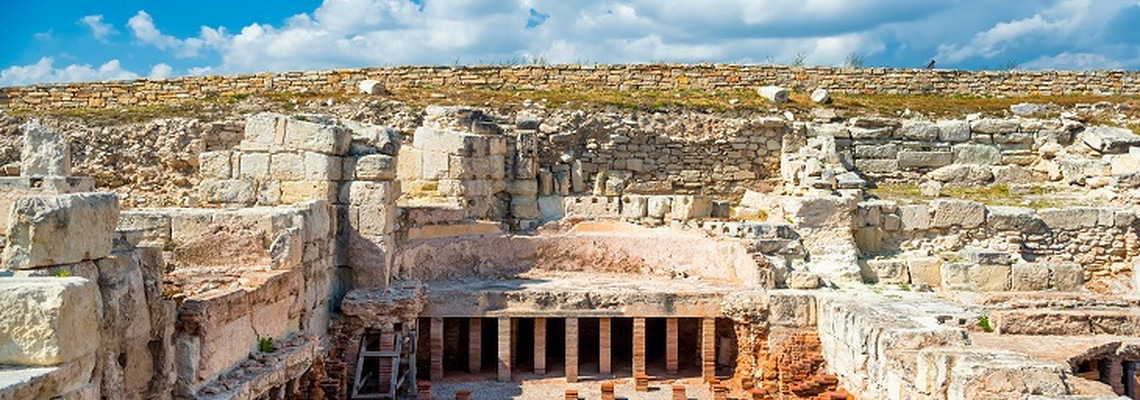If you’ve visited the Greco-Roman Curium Amphitheatre in the Limassol district, perched high on a cliff top overlooking the Limassol coast, then you’ll be well aware that the site is a magical one. But it’s not just the theatre that commands attention at this magnificent archaeological site.
The archaeological remains of Curium city – one of the most important city kingdoms in antiquity – is also exceptionally impressive, with much for the visitor to take in.
Once a flourishing kingdom, the earliest evidence of settlement in the area dates back the Neolithic period (5500-3900 B.C.), while the most ancient remains in the city date back to the Middle and Late Bronze Age. The city was eventually destroyed by a severe earthquake in 365 AD. Take note of the remains of the Roman Agora, and its impressive public bath and Nymphaeum which once supplied the city with water.
Then there’s the House of Achilles (a Roman villa of the first half of the 4th century A.D ), adorned with impressive mosaic floors depicting the popular story of the revealing of Achilles’ true identity by Odysseus. The House of the Gladiators is another Roman house worth stepping into, dating back to the second half of the 3rd century, with one of the most important mosaics housed here depicting a gladiator combat scene.
South of the Agora are the remains of the large complex of buildings belonging to the three-aisled basilica, the cathedral of Curium. Originally built in the beginning of the 5th century A.D., it underwent architectural alterations and received new mosaic and opus sectile pavements in the 6th century.
HAVE A LOOK AT ALL OUR EXCURSIONS HERE




